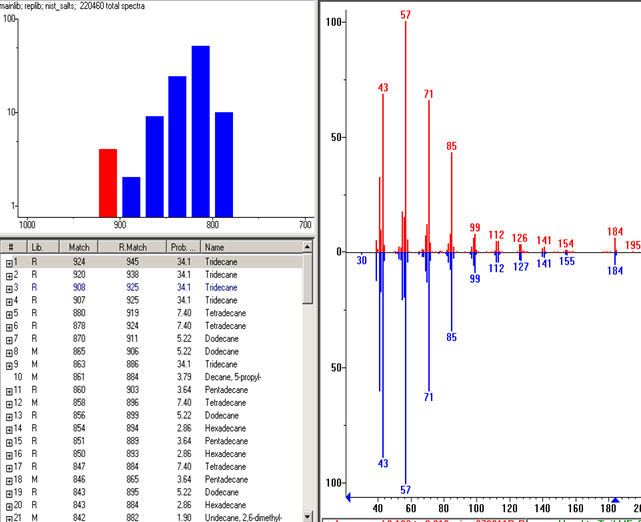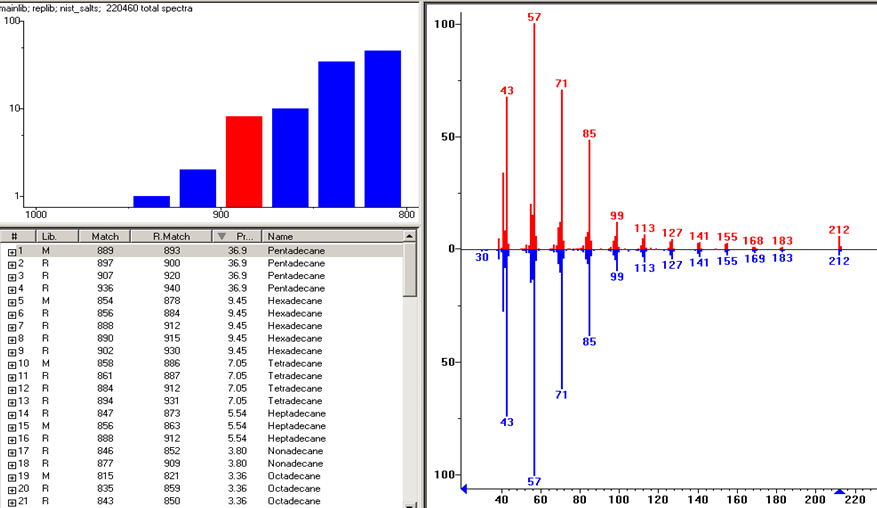Team:Washington/Alkanes/spectra
From 2011.igem.org
(Difference between revisions)
| Line 3: | Line 3: | ||
[[Image:Washington_C13spectrum.png|center|1000px|thumb|Experimental C13 alkane spectrum(red), and NIST reference C13 alkane spectrum(blue). Note the strong parent ion peak at a m/z ratio of 184.]] | [[Image:Washington_C13spectrum.png|center|1000px|thumb|Experimental C13 alkane spectrum(red), and NIST reference C13 alkane spectrum(blue). Note the strong parent ion peak at a m/z ratio of 184.]] | ||
[[Image:Washington C15spectrum.png|center|1000px|thumb|Experimental C15 alkane spectrum(red), and NIST reference C15 alkane spectrum(blue). Note the parent ion peak at a m/z ratio of 212.]] | [[Image:Washington C15spectrum.png|center|1000px|thumb|Experimental C15 alkane spectrum(red), and NIST reference C15 alkane spectrum(blue). Note the parent ion peak at a m/z ratio of 212.]] | ||
| + | [[Image:Washington C17spectrum.png|center|1000px|thumb|Experimental C17 alkene spectrum(red), and NIST reference C17 alkene spectrum(blue). Note the strong parent ion peak at a m/z ratio of 238.]] | ||
 "
"





